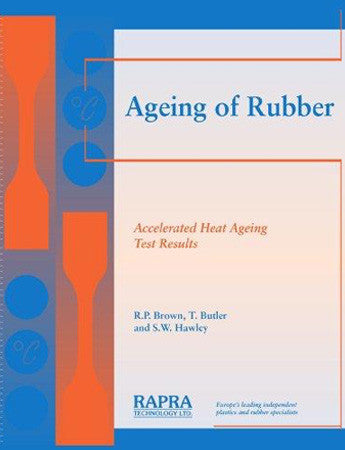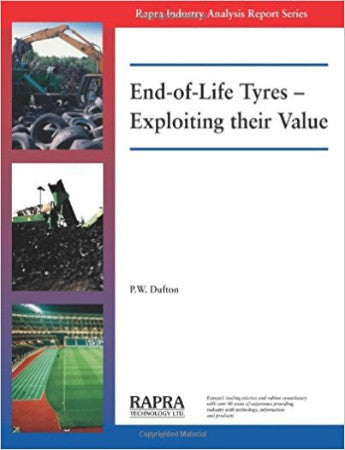Rubber Basics
The Rubber Basics book comprises a glossary of terms used in the rubber industry, a detailed description of the common rubber materials, a section on rubber additives, and an outline of the equipment types used in rubber processing.
The book aims to be a useful desktop reference book for anyone in the rubber industry. It provides a quick means of obtaining information about key subjects. It is simple enough to be understood by someone with a basic knowledge of the industry, but comprehensive enough to provide additional information for experienced workers moving into new areas.
Many abbreviations are found in the industry and the glossary contains a good number of entries defining these. Terms relating to many aspects of the industry are included in materials, additives, physical test methods and machinery types to analytical test equipment. Examples include Adiabatic, Conductive Rubber, Dolly, Mooney Scorch Test, Rubbone, and Whiting.
A useful short section lists the specific gravities of common rubbers and compounding ingredients, an important factor in material selection.
The section on rubbers is derived from the Rapra material selection programme known as Rubacams. It includes basic chemical structures for each rubber type together with information about material properties and uses. The material types covered range from natural rubber through polysulphide rubbers to thermoplastic elastomers.
Rubber compounding ingredients are listed and discussed from accelerators to waxes. The role of each ingredient in rubber compounding is described, together with general comments on usefulness and some of the issues involved. For example, titanium dioxide is generally used as a whitening agent but is also a useful reinforcing agent, the limiting factor being cost.
Rubber processing involves a wide variety of equipment from bale heaters to tyre retreading and testing machinery. This section describes each type in turn and its uses. Thus moulding, extrusion, hose braiding and dipping are all covered in this section.
The book aims to be a useful desktop reference book for anyone in the rubber industry. It provides a quick means of obtaining information about key subjects. It is simple enough to be understood by someone with a basic knowledge of the industry, but comprehensive enough to provide additional information for experienced workers moving into new areas.
Many abbreviations are found in the industry and the glossary contains a good number of entries defining these. Terms relating to many aspects of the industry are included in materials, additives, physical test methods and machinery types to analytical test equipment. Examples include Adiabatic, Conductive Rubber, Dolly, Mooney Scorch Test, Rubbone, and Whiting.
A useful short section lists the specific gravities of common rubbers and compounding ingredients, an important factor in material selection.
The section on rubbers is derived from the Rapra material selection programme known as Rubacams. It includes basic chemical structures for each rubber type together with information about material properties and uses. The material types covered range from natural rubber through polysulphide rubbers to thermoplastic elastomers.
Rubber compounding ingredients are listed and discussed from accelerators to waxes. The role of each ingredient in rubber compounding is described, together with general comments on usefulness and some of the issues involved. For example, titanium dioxide is generally used as a whitening agent but is also a useful reinforcing agent, the limiting factor being cost.
Rubber processing involves a wide variety of equipment from bale heaters to tyre retreading and testing machinery. This section describes each type in turn and its uses. Thus moulding, extrusion, hose braiding and dipping are all covered in this section.
Section 1: Glossary of Rubber Terms
Section 2: Specific Gravities of Some Rubbers and Compounding Ingredients
Section 3: Rubbers including:
Natural Rubber, Nitrile Rubbers, Polyisoprene, Polybutadiene, Epichlorohydrin Polymers, Polychloroprene, Polynorbornene Butyl Rubbers, Styrene-Butadiene Rubber, Ethylene-Propylene Rubber, Chlorosulphonated Polyethylene, Ethylene-Vinyl Acetate Copolymer, Ethylene-Acrylic Rubber, Polyacrylate Rubbers, Silicone Rubbers, Ebonite, Polysulphide Rubber, Propylene Oxide-Allyl Glycidyl Ether Copolymer, Polyurethane Elastomers, Fluorocarbon Rubber and Thermoplastic Elastomers.
Section 4: Rubber Compounding Ingredients including:
Accelerators, Antidegradants, Blowing Agents, Dusting and Anti-Tack Agents, Factice, Fillers, Fire Retardants, Peroxides, Petroleum Oils, Pigments, Prevulcanisation Inhibitors, Release Agents, Vulcanising Agents, and Waxes
Section 5: Rubber Processing Equipment including
Autoclaves, Cable Manufacturing, Calenders, Compression Moulding Presses, Conveyors, Cutting Equipment, Deflashing, Dipping, Dusting Devices, Extruders, Granulators, Shredders, Grinders, Hose Machinery, Injection Moulding Machines, Internal Mixers, Marking Devices, Metal Preparation for Bonding, Mills, Mixers for Rubber Dough, Moulds, Ovens, Preheaters, Presses, Spreading Machines, Transfer Moulding and Tyre Building Equipment
Section 2: Specific Gravities of Some Rubbers and Compounding Ingredients
Section 3: Rubbers including:
Natural Rubber, Nitrile Rubbers, Polyisoprene, Polybutadiene, Epichlorohydrin Polymers, Polychloroprene, Polynorbornene Butyl Rubbers, Styrene-Butadiene Rubber, Ethylene-Propylene Rubber, Chlorosulphonated Polyethylene, Ethylene-Vinyl Acetate Copolymer, Ethylene-Acrylic Rubber, Polyacrylate Rubbers, Silicone Rubbers, Ebonite, Polysulphide Rubber, Propylene Oxide-Allyl Glycidyl Ether Copolymer, Polyurethane Elastomers, Fluorocarbon Rubber and Thermoplastic Elastomers.
Section 4: Rubber Compounding Ingredients including:
Accelerators, Antidegradants, Blowing Agents, Dusting and Anti-Tack Agents, Factice, Fillers, Fire Retardants, Peroxides, Petroleum Oils, Pigments, Prevulcanisation Inhibitors, Release Agents, Vulcanising Agents, and Waxes
Section 5: Rubber Processing Equipment including
Autoclaves, Cable Manufacturing, Calenders, Compression Moulding Presses, Conveyors, Cutting Equipment, Deflashing, Dipping, Dusting Devices, Extruders, Granulators, Shredders, Grinders, Hose Machinery, Injection Moulding Machines, Internal Mixers, Marking Devices, Metal Preparation for Bonding, Mills, Mixers for Rubber Dough, Moulds, Ovens, Preheaters, Presses, Spreading Machines, Transfer Moulding and Tyre Building Equipment
Richard Simpson is an expert in rubber processing and testing, having worked at Rapra in a senior capacity for many years.




